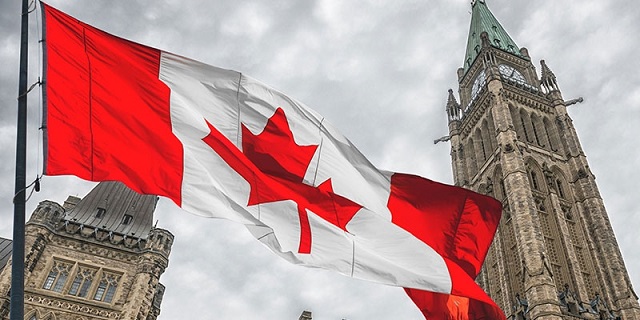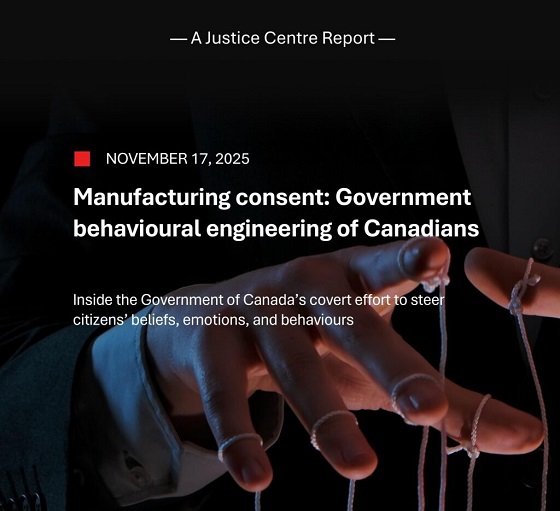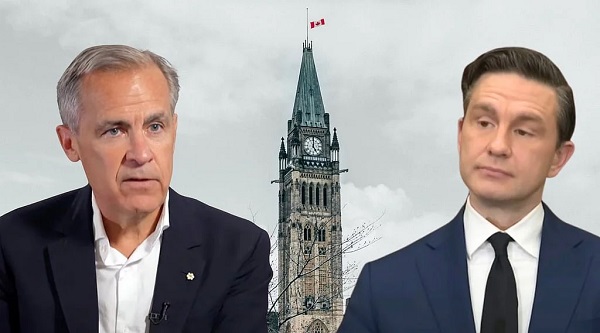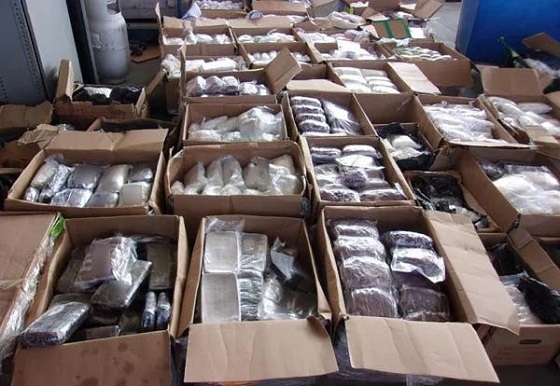David Clinton
What Happens When Ministries Go Rogue?

Global Affairs Canada and the strange, wonderful world only they can see
This is an older (and longer) version of an article just published by the Macdonald-Laurier Institute.
Some may think of the people behind Global Affairs Canada (GAC – also known as Department of Foreign Affairs) as Canada’s brightest and best, executing a sophisticated and far-seeing foreign policy. They may be right. But the description that more readily comes to my mind is “completely out of control.” I may be wrong.
But if I am wrong, I’m not the only one. Vivian Bercovici – a former Canadian ambassador to Israel – quoted former Prime Minister Harper as saying “that in his 10 years in office, the most difficult department for his government to work with was Foreign Affairs.”
The Audit is a reader-supported publication. To receive new posts and support my work, consider becoming a free or paid subscriber.
What is it about GAC, and Western foreign services in general, that makes them so subversive? Bercovici puts it this way:
“In the postwar years, foreign-affairs bureaucracies in Western democracies ballooned in size. Foreign-service officers saw themselves as better-informed and -trained to manage diplomatic complexities than the elected officials they supposedly served. They also mastered the art of diffusing responsibility and outcomes among the many layers and offices engaged in any particular issue. As a practical matter, this means that neither success nor failure is attributed to individuals, resulting in a lack of accountability throughout the organization. It also means that internal sabotage of the will of government is more easily effected and concealed. Where authority and responsibility are blurred, accountability is impossible.”
All that’s well above my pay grade. But I’m perfectly capable of observing the work GAC actually does. So I’m going to discuss three specific GAC programs that seem to present some unhealthy processes and patterns. Perhaps they’ll help us reach useful conclusions.

GAC and the Global Fund
According to GAC’s Project Browser tool, between 2008 and 2022 Canada committed $3.065 billion to the Global Fund to Fight AIDS, Tuberculosis and Malaria. Which on the face of it is great. No one here is cheering for Team Malaria, right? But we should ask a couple of questions:
- Is the scale of the support appropriate given financial constraints back home?
- Was that money well spent?
I’m not going to even try to answer the first question: that’s something for Canadians to talk about as a society. For context though, GAC’s total annual budget for foreign aid funding seems to be in the neighborhood of $16 billion (of which around $2 billion goes to United Nations agencies). $16 billion would represent roughly 4 percent of total annual federal government expenditures.
However I do have a lot to say about question number two. First of all, the Global Fund to Fight AIDS, Tuberculosis and Malaria has been dogged by serious accusations of corruption and lack of transparency for more than a decade. That means there’s a good chance a substantial proportion of our money ended up moving through private Caribbean bank accounts on its way to cozy dachas in Sochi.
But I’m going to ignore that for now because we can’t be sure the funny business is still happening. And because if we canceled all government programs that were at risk of misuse we’d have to lay off the entire federal civil service. Which would be a very bad thing, because…well it just would.
Instead, I’ll focus on measuring the impact of our investment. What were the goals GAC set for its Global Fund contribution? Their own website fills us in:
“The expected results are defined by the “Global Fund Strategy 2017-2022”. This strategy includes the following targets, to be achieved by 2020: (1) 90% of persons living with HIV (PLHIV) know their status, 90% PLHIV who know their status and receiving treatment; and 90% of people on treatment have suppressed viral loads; (2) a 20% and 35% decline in TB incidence rate and TB deaths respectively, compared with 2015; and (3) at least a 40% reduction in malaria mortality rates and malaria case incidence, compared with 2015.”
The GAC planners obviously felt that spending $3 billion over five years or so was reasonable as long as, between 2015 and 2020, it contributed to a 35 percent decline in TB deaths, a 40 percent decline in malaria deaths, and the 90%-90%-90% formula for people with HIV. And I’ll admit that it’s a compelling argument.
The thing is though, that no one could have known whether we’d actually achieve those results. And given the built-in ambiguity of the program’s goals, it’s not we could ever know whether it was a success. The decision therefore was a gamble. And the table stakes were $3 billion belonging to Canadian taxpayers.
Should nameless, unelected planners have that much power over our money? Assuming that they’re genuine domain experts, then sure. Who else is better? But:
With great power comes great responsibility. (Nietzsche? Kant? Aristotle? Nope. Spiderman’s uncle)
Claiming to possess domain expertise isn’t free: if you break it, you own it. So if death rates happily fell during the program years then the planners should be rewarded for their service to humanity. But if they didn’t fall, or if they didn’t fall as much as predicted then, at the very least, people should lose their jobs.
Fortunately, with the hindsight allowed us by historical data, we can easily see how things worked out. Unfortunately, it looks like the fine folk at GAC stepped on a rake.
Our World in Data numbers give us a pretty good picture of how things played out in the real world. Tragically, Malaria killed 562,000 people in 2015 and 627,000 in 2020. That’s a jump of 11.6 percent as opposed to the 40 percent decline that was expected. According to the WHO, there were 1.6 million tuberculosis victims in 2015 against 1.2 million in 2023. That’s a 24.7 percent drop – impressive, but not quite the required 35 per cent.
I couldn’t quickly find the precise HIV data mentioned in the program expectations, but I did see that HIV deaths dropped by 16 percent between 2015 and 2019. So that’s a win.
But it’s clear that the conditions underlying the GAC wager were not met.
To be fair, GAC reporting in 2023 claims that: “Since 2002, (their) efforts have contributed to a significant decline in deaths caused by AIDS (‑70%), TB (‑21%) and malaria (‑26%).” – but those figures are unsourced, badly outdated, and completely fail to account for program spending subsequent to 2015.
The government gambled more than $3 billion of taxpayer funds and lost the bet. To date, they have yet to apologize, assure us that they’re busy reassessing their future commitments, or publicize their plans for the individuals who so carelessly lost our money.
For that matter, were those individuals even GAC employees? It’s possible that the decision was made by representatives of the uber-expensive contract consulting firm, McKinsey. When will that information become public?
GAC and the World Food Programme
The Global Fund deal was one bad multilateral bet. Were there others? Sure. Over the five years between 2016 and 2021 GAC entrusted a total of $125 million with the UN World Food Programme to provide emergency food aid. Africa represented 60 percent of the program’s target, and the one policy marker designated as a “significant objective” was gender equality. The programs expected results included:
- Improved access to food and nutrition assistance for food-insecure populations
- Increased ability of the World Food Programme to provide appropriate responses to humanitarian crises
Overall, the “expected ultimate outcome is the reduced vulnerability of crisis-affected people, especially women and children.” Unfortunately, here too, the numbers moved in the wrong direction. As the graph shows, numbers from Our World in Data show that the percentage of people across the African continent who lack the minimum daily caloric intake – despite years of declines – has been climbing steadily precisely through the GAC’s program timeline. Malnutrition went from 15 to 19.7 percent since 2013.
I’ll admit that I can’t be sure I’m not oversimplifying things here. There could well have been powerful geopolitical or macro economic changes behind surges in malaria and malnutrition. Perhaps those crises would have been even worse had Canadian funding not been in place. Global events seldom have easy explanations.
But what I can see is a fairly consistent pattern. GAC spends hundreds of millions and billions of dollars on multi-year agreements with multilateral organizations. Key success indicators are rarely met. Persistent rumors of corruption and incompetence (and worse) often hover above the largest aid organizations. But there’s never any evidence of comprehensive program and mandate assessments within GAC itself. They might happen, but they’re not telling us. And that’s a problem.
Note: I received no response to repeated efforts to reach GAC officials for comment on these programs.
GAC and the United Nations Relief and Works Agency
The government of Canada – through GAC – has long been among the major financial supporters of The United Nations Relief and Works Agency for Palestine Refugees in the Near East (UNRWA). Leading up to the Hamas massacre on October 7, 2023, the 75 year-old United Nations agency had a yearly budget of more than 900 million U.S. dollars, and had long been accused of antisemitism, corruption, and complicity in war crimes.
At various points long before the current war, the Netherlands, Switzerland and the Unites States had all felt compelled to suspend payments to UNRWA over related concerns. The Harper government cut funding to UNRWA in 2010, but Prime Minister Trudeau restored it in 2016. Canada briefly froze funding to UNRWA in January 2024 due to the organization’s connections to the October 7 attacks but once again restored payments in March.
I’m curious to know what the quarter billion dollars that Canada has donated to UNRWA since 2016 was used for and what safeguards the government imposed to ensure we weren’t facilitating criminal or genocidal behavior.
In fact, the official record of Canada’s parliament includes the unanimous agreement of the Standing Committee on Foreign Affairs and International Development from Thursday, February 4, 2021, when they declared:
“That the committee express its deep concern about certain educational materials circulated to students by UNRWA during the pandemic in error that violates the values of human rights, tolerance, neutrality and non-discrimination, at a time when UNRWA is receiving funding from the Government of Canada, and report this motion to the House”
It’s noteworthy that the final version of the text included the phrase “in error”. That addition was not agreed to unanimously, because it would suggest that the copious educational material openly promoting extreme nationalism and violence against Jews somehow only found its way into classrooms by some weird accident. (Someone might have left a window open and the wind blew book-filled boxes in. Could of happened to anyone.)
In the end, only the four Conservative members of the committee opposed the “in error” phrasing.
The motion was originally inspired by a report published by the Institute for Monitoring Peace and Cultural Tolerance in School Education (IMPACT-se). That report documented many instances of the glorification and promotion of violent Jihad, martyrdom, and terrorism within UNRWA educational materials.
As it turns out, it’s now clear that not only was the content created by UNRWA and included in their curricula by design, but it’s still being printed and widely taught in UNRWA schools (when they’re operational). The agency’s only practical response to the criticism was to remove references from their public-facing website.
Further research by IMPACT-se in the aftermath of the October 7 attacks has revealed how, for instance, “13 UNRWA staff members have publicly praised, celebrated or expressed their support for the unprecedented deadly assaults on civilians.” The report also documents how at least 18 UNRWA graduates have “died carrying out acts of terror.”
Of course, our concerns go far beyond education. Since the start of Israel’s land offensive in Gaza, it’s become painfully obvious that UNRWA schools and hospitals have been used as rocket launching areas, weapons storage facilities, and access points for Hamas military tunnels – all clear war crimes. It’s difficult to imagine how a reasonable person could conclude that UNRWA officials – and those providing program oversight – were not aware of those violations.
More recently, the UN itself admitted that at least nine of its employees “might have” been involved in the October 7 massacres and will be fired.
GAC – at least in its public statements – hasn’t ignored the problem. In June of 2023, they announced that:
“Canada will remain closely engaged with UNRWA and continue to exercises (sic) enhanced due diligence for all humanitarian and development assistance funding for Palestinians. This work includes ongoing oversight, regular site visits, a systematic screening process and strong anti-terrorism provisions in funding agreements.”
The problem is that subsequent credible revelations have demonstrated that the “oversight” and “regular site visits” promised by GAC either never happened, were an embarrassing failure…or something much worse.
Canadians have a right to know how their money is spent. It would be helpful if the government, and Global Affairs Canada in particular, would at the very least tell us exactly how they’re going to fix these messes.
The Audit is a reader-supported publication. To receive new posts and support my work, consider becoming a free or paid subscriber.
Invite your friends and earn rewards
Artificial Intelligence
When A.I. Investments Make (No) Sense

Based mostly on their 2024 budget, the federal government has promised $2.4 billion in support of artificial intelligence (A.I.) innovation and research. Given the potential importance of the A.I. sector and the universal expectation that modern governments should support private business development, this doesn’t sound all that crazy.
But does this particular implementation of that role actually make sense? After all, the global A.I. industry is currently suffering existential convulsions, with hundreds of billions of dollars worth of sector dominance regularly shifting back and forth between the big corporate players. And I’m not sure any major provider has yet built a demonstrably profitable model. Is Canada in a realistic position to compete on this playing field and, if we are, should we really want to?
First of all, it’s worth examining the planned spending itself.
- $2 billion over five years was committed to the Canadian Sovereign A.I. Compute Strategy, which targets public and private infrastructure for increasing A.I. compute capacity, including public supercomputing facilities.
- $200 million has been earmarked for the Regional Artificial Intelligence Initiative (RAII) via Regional Development Agencies intended to boost A.I. startups.
- $100 million to boost productivity is going to the National Research Council Canada’s A.I. Assist Program
- The Canadian A.I. Safety Institute will receive $50 million
In their goals, the $300 million going to those RAII and NRC programs don’t seem substantially different from existing industry support programs like SR&ED. So there’s really nothing much to say about them.
And I wish the poor folk at the Canadian A.I. Safety Institute the best of luck. Their goals might (or might not) be laudable, but I personally don’t see any chance they’ll be successful. Once A.I. models come on line, it’s only a matter of time before users will figure out how to make them do whatever they want.
But I’m really interested in that $2 billion for infrastructure and compute capacity. The first red flag here has to be our access to sufficient power generation.
Canada currently generates more electrical power than we need, but that’s changing fast. To increase capacity to meet government EV mandates, decarbonization goals, and population growth could require doubling our capacity. And that’s before we try to bring A.I. super computers online. Just for context, Amazon, Microsoft, Google, and Oracle all have plans to build their own nuclear reactors to power their data centers. These things require an enormous amount of power.
I’m not sure I see a path to success here. Plowing money into A.I. compute infrastructure while promoting zero emissions policies that’ll ensure your infrastructure can never be powered isn’t smart.
However, the larger problem here may be the current state of the A.I. industry itself. All the frantic scrambling we’re seeing among investors and governments desperate to buy into the current gold rush is mostly focused on the astronomical investment returns that are possible.
There’s nothing wrong with that in principle. But “astronomical investment returns” are also possible by betting on extreme long shots at the race track or shorting equity positions in the Big Five Canadian banks. Not every “possible” investment is appropriate for government policymakers.
Right now the big players (OpenAI, Anthropic, etc.) are struggling to turn a profit. Sure, they regularly manage to build new models that drop the cost of an inference token by ten times. But those new models consume ten or a hundred times more tokens responding to each request. And flat-rate monthly customers regularly increase the volume and complexity of their requests. At this point, there’s apparently no easy way out of this trap.
Since business customers and power users – the most profitable parts of the market – insist on using only the newest and most powerful models while resisting pay-as-you-go contracts, profit margins aren’t scaling. Reportedly, OpenAI is betting on commoditizing its chat services and making its money from advertising. But it’s also working to drive Anthropic and the others out of business by competing head-to-head for the enterprise API business with low prices.
In other words, this is a highly volatile and competitive industry where it’s nearly impossible to visualize what success might even look like with confidence.
Is A.I. potentially world-changing? Yes it is. Could building A.I. compute infrastructure make some investors wildly wealthy? Yes it could. But is it the kind of gamble that’s suitable for public funds?
Perhaps not.
Business
Is Canada’s $100B+ Climate Plan Based on Shaky Science?

Rising CO2 levels have, in fact, been instrumental in promoting an ongoing planet-wide increase in vegetation cover. This is thanks to enhanced photosynthesis and water use efficiency and has contributed to higher agricultural yields. It turns out that, whatever acidification may be happening, there appears to be no serious impact on marine life.
The Climate Working Group at the U.S. Department of Energy recently published “A Critical Review of Impacts of Greenhouse Gas Emissions on the U.S. Climate“. Of note, that group includes University of Guelph’s very own Professor Ross McKitrick.
The authors conclude that while climate change is real and influenced by human emissions, its risks are often exaggerated. Instead:
- Published models have consistently and aggressively overestimated warming
- Extreme weather trends are not worsening as claimed
- Aggressive mitigation policies may cause more harm than good
Rising CO2 levels have, in fact, been instrumental in promoting an ongoing planet-wide increase in vegetation cover. This is thanks to enhanced photosynthesis and water use efficiency and has contributed to higher agricultural yields. It turns out that, whatever acidification may be happening, there appears to be no serious impact on marine life.
To be sure, there’s been vocal push back against the report’s findings. But that just highlights the complexity, volatility, and intense political stakes of the issues involved.
Despite my own stellar academic publishing history (see my high school paper from 45 years ago on CO2 emissions and the acidification of lakes in Ontario for full details), it turns out that I’m not qualified to express an opinion here. After all, I lack the necessary combined expertise in natural sciences, applied sciences, social sciences, and so on.
But I suspect that the people in Ottawa who make related policy decisions aren’t necessarily all that better prepared than I am. Which makes me wonder just how much of our money has been spent through the past ten years based on assumptions that are far from universally accepted in the scientific community.
The short answer is: many billions of dollars. Here are some highlights:
- $28.7 billion for the public transit envelope from the Investing in Canada Plan
- $26.9 billion for the Green Infrastructure Investments envelope from the Investing in Canada Plan
- $2 billion for the Low Carbon Economy Fund
- $8 billion for the Net Zero Accelerator
- $103 billion for the Clean-economy Investment Tax Credits (although that won’t all be spent before 2035)
- $3 billion in EV purchase rebates from the Incentives for Zero-Emission Vehicles
- $2.6 billion for Canada Greener Homes Grants
- $2.75 billion for the Zero-Emission Transit Fund (school buses and municipal ZEV fleets)
- $1.5 billion to support low-carbon fuel production and adoption
- $964 million for the Smart Renewables and Electrification Pathways Program (renewable projects, storage, and grid modernization)
- $680 million for Zero-Emission Vehicle Infrastructure Program (charging stations and hydrogen refuelling)
Granted, some of that funding will address other policy needs besides just climate change mitigation, and nearly all of it is designed to be paid out over multiple years. And of course, not all funds that were allocated have been spent yet. Two thumbs up for inertia!
But it’s still an awful lot of money considering no one really knows for sure whether any of this is helpful. Not to mention that, while it’s complicated, after a decade of trying, Canada’s actual emissions haven’t necessarily dropped.
-

 COVID-197 hours ago
COVID-197 hours agoNew report warns Ottawa’s ‘nudge’ unit erodes democracy and public trust
-

 Bruce Dowbiggin2 days ago
Bruce Dowbiggin2 days agoBurying Poilievre Is Job One In Carney’s Ottawa
-

 Great Reset2 days ago
Great Reset2 days agoEXCLUSIVE: A Provincial RCMP Veterans’ Association IS TARGETING VETERANS with Euthanasia
-

 Health2 days ago
Health2 days agoDisabled Canadians petition Parliament to reverse MAiD for non-terminal conditions
-

 COVID-192 days ago
COVID-192 days agoCovid Cover-Ups: Excess Deaths, Vaccine Harms, and Coordinated Censorship
-

 Daily Caller2 days ago
Daily Caller2 days agoSpreading Sedition? Media Defends Democrats Calling On Soldiers And Officers To Defy Chain Of Command
-

 Digital ID2 days ago
Digital ID2 days agoLeslyn Lewis urges fellow MPs to oppose Liberal push for mandatory digital IDs
-

 Crime1 day ago
Crime1 day agoHow Global Organized Crime Took Root In Canada











